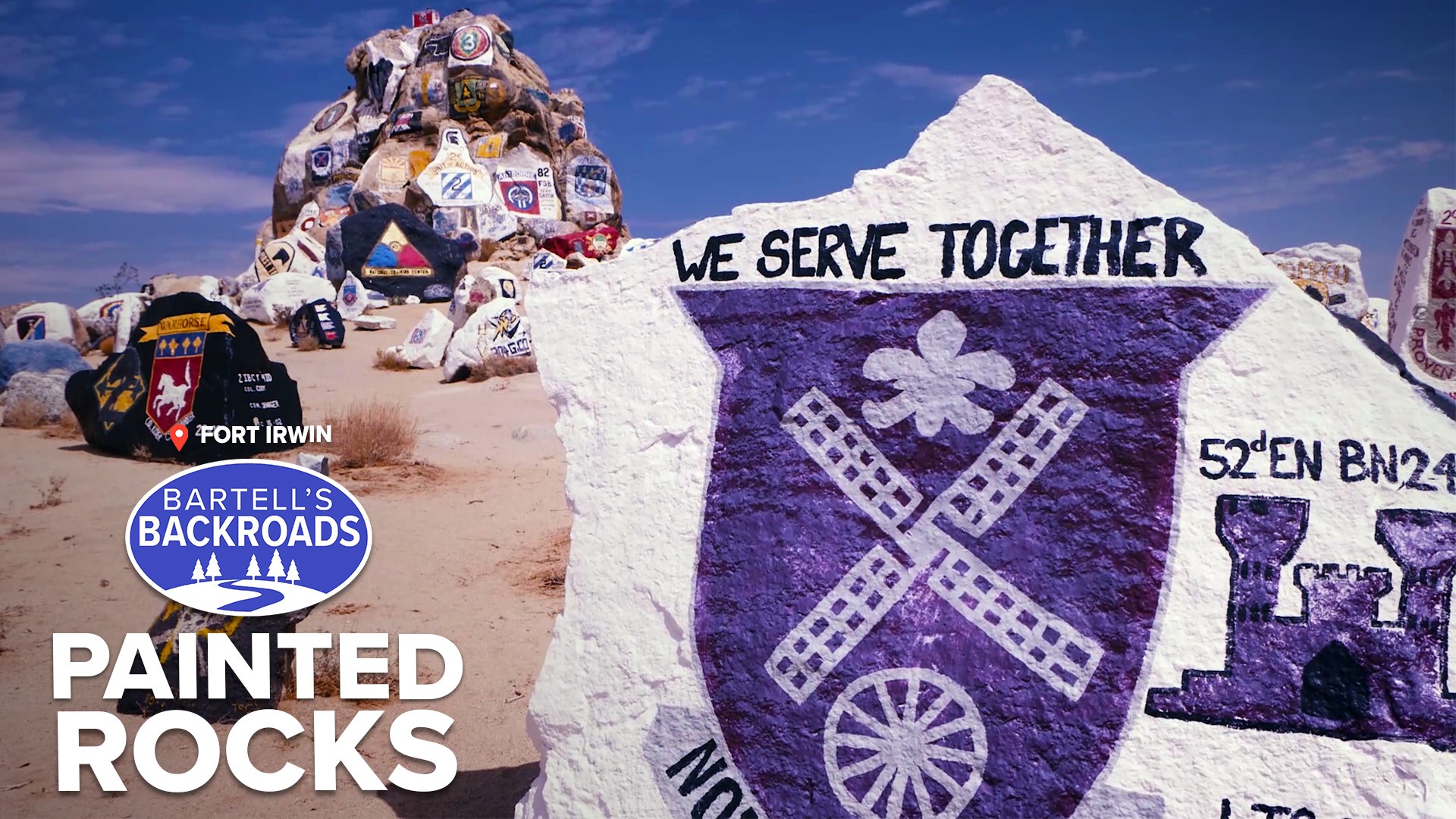FORT IRWIN, Calif. — Somewhere between Death Valley, Mojave National Preserve and the middle of nowhere is a pile of rocks. They are not just any rocks; they are painted rocks.
Some are big and some are small, but each one was strategically placed here in secret, according to Ken Drylie.
“I’d love to know how they moved them. I’ve never seen one moved,” Drylie said.
Drylie runs the General Robert W. Cone Heritage Center at Fort Irwin and though he’s never seen anyone place the rocks here, he does know the reason they were painted.
“These are world-famous painted rocks. When a unit comes out here to train, after their training, they request permission to paint a rock with their distinctive unit insignia, but they have to move the rock here first,” Drylie said.
The units that Drylie is talking about are groups of newly trained soldiers at the Fort Irwin National Training Center.
“The rumor is that the reason they have to move the rocks is because Fort Irwin is full of rocks, and if all the rocks are removed the fort will cease to exist and everyone can go home,” Drylie said.
Newly trained soldiers have been painting rocks since the late 1960s. They were placed outside Fort Irwin’s entrance gate for two reasons. One, so civilians could see them, and two — because Fort Irwin is one of the most intense training facilities in the world and getting through it is worth commemorating.
“A week in Fort Irwin was worse than your entire deployment to Iraq. We gave everything you were gonna hit within a week,” Drylie said.
TAKE A TRIP ON BARTELL'S BACKROADS:
► See an interactive map of everywhere John has visited on the backroads
► Watch all of the Backroads videos
► Follow John on Facebook
The General Robert W. Cone Heritage Center tells the long history of Fort Irwin. Military operations in the area date back to the 1800s but Fort Irwin became an actual training center in the 1940s and trained soldiers to shoot down enemy aircraft. Eventually, the military expanded Fort Irwin’s training facility and created what’s known as “the Box,” which is short for "the sandbox."
“The training area here is roughly the size of Rhode Island,” Drylie said.
The Army uses “the Box” as a battle tactics zone to prepare troops for deployment. "The Box" is made to look and feel realistic. The Army has created several battle scenarios which include actors and ornate set pieces.
“We contracted out with people from Hollywood to come up and do set dressing on our land-sea containers,” Drylie said.
Speaking of Hollywood. Fort Irwin has been the backdrop of numerous movies.
“The very opening scenes of G.I. Joe, when the bots get hit by the nano-probe, that was on our Bicycle Lake," Drylie said.
Several miles from the shooting, explosions and Hollywood sets is NASA’s Goldstone Deep Space Communication Complex. These massive Radio telescopes play a crucial part in space exploration.
In the case of radio telescopes, bigger is better. The Goldstone complex can beam messages up to the International Space Station and 14 billion miles away to the Voyager spacecraft.
Despite being in the middle of nowhere, a few hundred service members and their families live at Fort Irwin, and for many it’s an unforgettable experience.
“I had a guy who was here in the 1950s come back, and he cried when he left. He actually broke down,” Drylie said.
The General Robert W. Cone Heritage Center at Fort Irwin is open to the public by special request. You can schedule a tour here.
HIT THE BACKROADS: The Castle Air Museum in Atwater has over 70 historic military aircraft on display. Its massive collection includes a decommissioned Air Force One.

